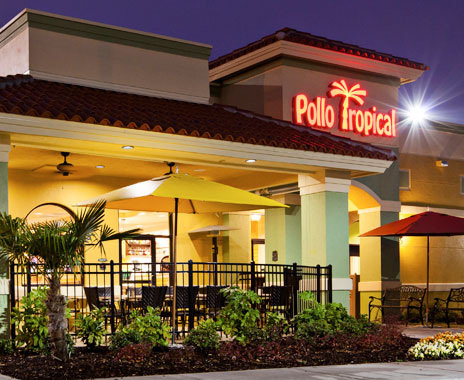During any given year, a restaurant company that records a 50 percent increase in its stock price could expect to crow pretty loudly about the accomplishment. But even that type of gain wasn’t good enough to crack the top 10 among publicly held limited-service restaurant operators in 2013, as equities market soared.
“It’s been a very good year for the market and for many restaurant companies,” says R.J. Hottovy, a dining industry analyst at Chicago’s investment firm Morningstar. “There were some pockets of weakness, but most restaurant [stock] values have had good gains.”
Thirty limited-service restaurant parent companies were public all year, and 19 of them bested a strong Standard & Poor’s 500 index. The benchmark soared 29.6 percent, closing 2013 at a record high and posting its biggest annual gain in 16 years.
One reason for the stock market’s strong performance, experts say, was the continuation of low interest rates. Investors needed a place to put their money, and equities provided good returns.
Most quick-service and fast-casual restaurant shares rode that wave. Some dining companies had good growth stories to tell, while others chalked up solid earnings, even though the industry endured relatively weak traffic and tepid same-store sales gains.
Just two limited-service restaurant stocks, Cosi and Lime Fresh Mexican Grill parent Ruby Tuesday, finished the year at prices below 2012’s closing mark. Two quick-service giants, McDonald’s and Yum! Brands, had only modest gains of 10 percent and 13.9 percent, respectively.
Most companies operating fast-casual units continued to do well. “[Fast-casual] restaurants are perceived as healthier and offering great value,” says Jim Yin, restaurant analyst at S&P Capital IQ, a division of Standard & Poor’s that provides market research and analysis.
The fast-casual sector’s strength was accentuated by investor interest last year in initial stock offerings by Noodles and Co. and Potbelly Corp. The two companies went public at higher prices than expected and traded at close to double their offering prices at year-end.
The year’s best performer by far, with a whopping 241 percent share gain, was Fiesta Restaurant Group. The suburban Dallas-based company operates a pair of growing fast- casual chains: Caribbean-inspired Pollo Tropical and Mexican-influenced Taco Cabana. Fiesta’s shares have been on a tear since the company was spun off from Carrols Restaurant Group in May 2012.
“We are just getting on investors’ radars,” says Tim Taft, the company’s chief executive. The restaurants are beginning to expand into new markets, and “when people see how much value we provide [in the chains’ menus] for such a little price, they can’t believe it.”
Pollo Tropical “is one of the most differentiated concepts,” Taft says. It has 104 domestic stores primarily in Florida, with an average unit volume of $2.6 million despite being open for just lunch and dinner. The chain’s cash-on-cash return is more than 25 percent.
The concept, which features grilled chicken, also has 40 units around the Caribbean.
Taco Cabana, meanwhile, includes 160 units, mostly in Texas. The restaurants, which are open all day, have a $1.8 million average unit volume and 20 percent cash-on-cash return.
In addition to its growth plans, Fiesta successfully completed a secondary stock offering and then refinanced its remaining debt from 8.875 percent to about 2 percent, Taft says.
It was a good year for investors in other restaurants featuring Hispanic-influenced food, too. Chipotle Mexican Grill shares rose 79.1 percent, while stock in Jack in the Box, Qdoba’s parent company, recorded a 74.9 percent increase.
Pizza chains were the second- and third-best performers behind Fiesta, each more than doubling their share price. Noble Roman’s Pizza was aided by a new take-and-bake concept, while Pizza Inn rode the success of its growing Pie Five fast-casual chain.
“Pizza Inn is stabilizing and starting to turn around, in part due to a focus on improving quality,” says CEO Randy Gier. “At the same time, we have our second brand, Pie Five, which is a juggernaut leading the fast-casual pizza story.” There are 19 Pie Five stores, with 150 more committed for building in the next five years.
Other pizza operators did well, despite intense competition in that category. Papa John’s International had the 11th-best stock-price gain (62.3 percent) among limited-service companies, with Domino’s Pizza right behind it at 59.9 percent.
“Pizza is doing well because it offers value,” Yin says. “You can serve a family of four at the same price as two Big Macs.” In addition, he says, pizza appeals to all types of people, from meat-eaters to vegetarians, and has great international growth potential.
The performance of limited-service dining stocks was mirrored by all public restaurant stocks, as nearly two-thirds—32 of the 51 restaurant stocks valued at more than a few pennies—topped the S&P 500.
Although McDonald’s had a less-than-stellar year, suffering weak same-store sales growth, three other big burger chains did particularly well. Sonic’s shares were up 93.9 percent, seventh best in limited service, followed closely by Wendy’s, up 85.5 percent. Jack in the Box was 10th, and Burger King Worldwide (18th) rose 39 percent.










